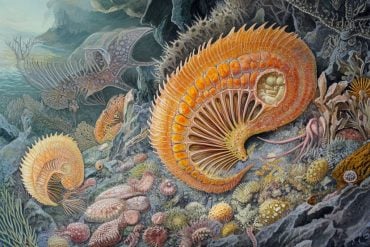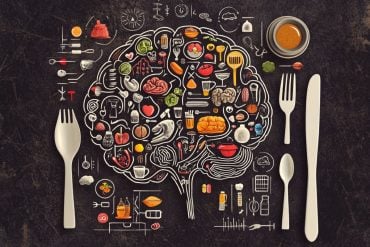Summary: When parents play with their child, their brains show similar bursts of brain activity. The activity is linked to their baby’s attention patterns, and not their own, researchers report.
Source: PLOS.
When infants are playing with objects, their early attempts to pay attention to things are accompanied by bursts of high-frequency activity in their brain. But what happens when parents play together with them? New research, publishing December 13 in the open-access journal PLOS Biology, by Dr Sam Wass of the University of East London in collaboration with Dr Victoria Leong (Cambridge University and Nanyang Technological University, Singapore) and colleagues, shows for the first time that when adults are engaged in joint play together with their infant, their own brains show similar bursts of high-frequency activity. Intriguingly, these bursts of activity are linked to their baby’s attention patterns and not their own.
The authors simultaneously recorded electroencephalography (EEG) data from 12-month-old infants and their mothers when they were playing separately or together with toys. “Most infants spend the majority of their waking hours in the company of others. But almost everything we know about early learning in the brain comes from studies looking at individual baby brains in isolation,” said Dr Wass, lead author on the study. “By recording activity in a baby’s brain and their mother’s brain at the same time, we were able to see how changes in their brain activity reflected their own or each other’s behavior while they were playing together.”

“We know that, when an adult plays jointly together with a child, this helps the child to sustain attention to things,” he continued. “But until now we haven’t really understood why this is. Our findings suggested that, when a baby pays attention to things, the adult’s brain tracks and responds to her infant’s looking behavior – as if her infants’ actions are echoed in the parent’s brain activity. And we also found that, where the parent’s brain is more responsive to the child, the child sustains their attention for longer.”
Dr Leong, senior author on the study, said, “Our project asks more questions than it answers. We don’t know, for example, whether some parents are more responsive to their babies than others – and if so, why. And our study just looked at mums, so we don’t know whether mums and dads may be different in how they respond neurally to their babies. Our findings are exciting, but there is a lot more to investigate about how, exactly, this type of neural responsiveness by parents may help young children to learn.”
Funding: Economic and Social Research Council (grant number ES/N017560/1). to VL and SW. The funder had no role in study design, data collection and analysis, decision to publish, or preparation of the manuscript. Economic and Social Research Council (grant number ES/N006461/1). to SW. The funder had no role in study design, data collection and analysis, decision to publish, or preparation of the manuscript. Nanyang Technological University (grant number Grant M4081585.SS0). to VL. The funder had no role in study design, data collection and analysis, decision to publish, or preparation of the manuscript.
Source: Sam V. Wass – PLOS
Publisher: Organized by NeuroscienceNews.com.
Image Source: NeuroscienceNews.com image is credited to Kaili Clackso.
Original Research: Open access research for “Parental neural responsivity to infants’ visual attention: How mature brains influence immature brains during social interaction” by Sam V. Wass , Valdas Noreika, Stanimira Georgieva, Kaili Clackson, Laura Brightman, Rebecca Nutbrown, Lorena Santamaria Covarrubias, and Vicky Leong in PLOS Biology. Published December 13 2018.
doi:10.1371/journal.pbio.2006328
[cbtabs][cbtab title=”MLA”]PLOS”Parents’ Brain Activity Echoes Their Infant’s When Playing Together.” NeuroscienceNews. NeuroscienceNews, 14 December 2018.
<https://neurosciencenews.com/parent-baby-playing-brain-10343/>.[/cbtab][cbtab title=”APA”]PLOS(2018, December 14). Parents’ Brain Activity Echoes Their Infant’s When Playing Together. NeuroscienceNews. Retrieved December 14, 2018 from https://neurosciencenews.com/parent-baby-playing-brain-10343/[/cbtab][cbtab title=”Chicago”]PLOS”Parents’ Brain Activity Echoes Their Infant’s When Playing Together.” https://neurosciencenews.com/parent-baby-playing-brain-10343/ (accessed December 14, 2018).[/cbtab][/cbtabs]
Abstract
Parental neural responsivity to infants’ visual attention: How mature brains influence immature brains during social interaction
Almost all attention and learning—in particular, most early learning—take place in social settings. But little is known of how our brains support dynamic social interactions. We recorded dual electroencephalography (EEG) from 12-month-old infants and parents during solo play and joint play. During solo play, fluctuations in infants’ theta power significantly forward-predicted their subsequent attentional behaviours. However, this forward-predictiveness was lower during joint play than solo play, suggesting that infants’ endogenous neural control over attention is greater during solo play. Overall, however, infants were more attentive to the objects during joint play. To understand why, we examined how adult brain activity related to infant attention. We found that parents’ theta power closely tracked and responded to changes in their infants’ attention. Further, instances in which parents showed greater neural responsivity were associated with longer sustained attention by infants. Our results offer new insights into how one partner influences another during social interaction.
Author summary
We are a social species. Most infants and young children spend the majority of their early waking hours in the company of others. However, almost everything that we know about how the brain subserves early attention and learning comes from studies that examined brain function in one individual at a time just because it is easier to do experiments that way. Here, we examine the neural correlates of how attention is shared between two people engaged in social interaction. We recorded brain activity from infants and parents using scalp electroencephalogram during parallel solo play with toys and during joint play. We examined the associations between attention and brain activity in each member of the dyad independently (infant attention–infant brain, parent attention–parent brain), and we also examined cross-dyad associations (infant attention–parent brain). Our findings suggested that infants’ attention is more endogenously controlled during solo play than joint play. They also suggested that parents are neurally responsive to their infants during social play, and that, when the parent is more neurally responsive, the infant is more attentive.






